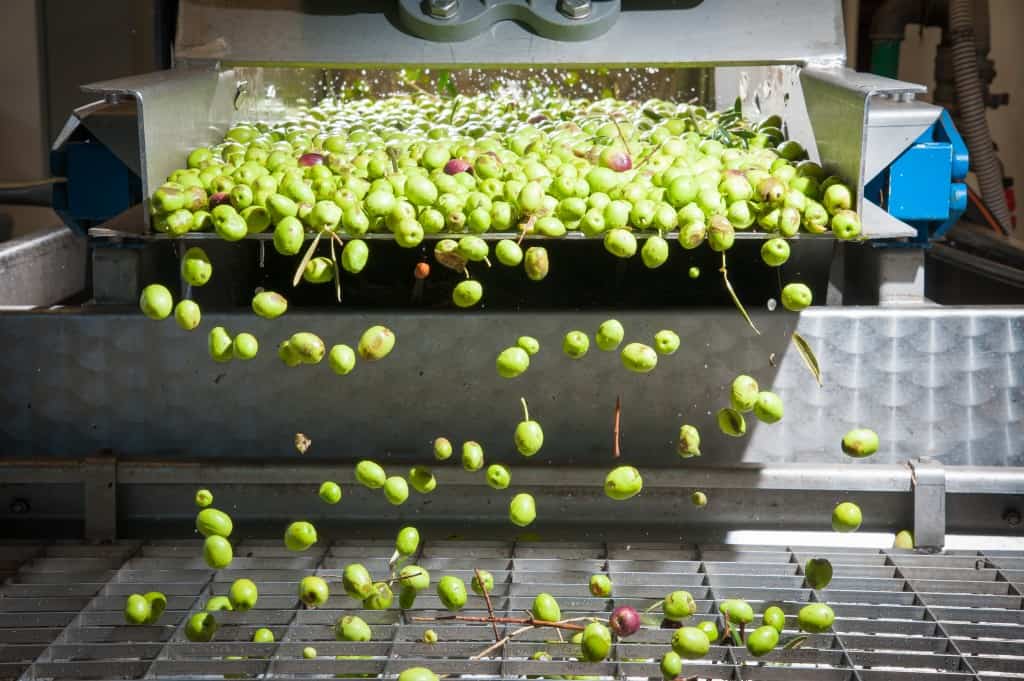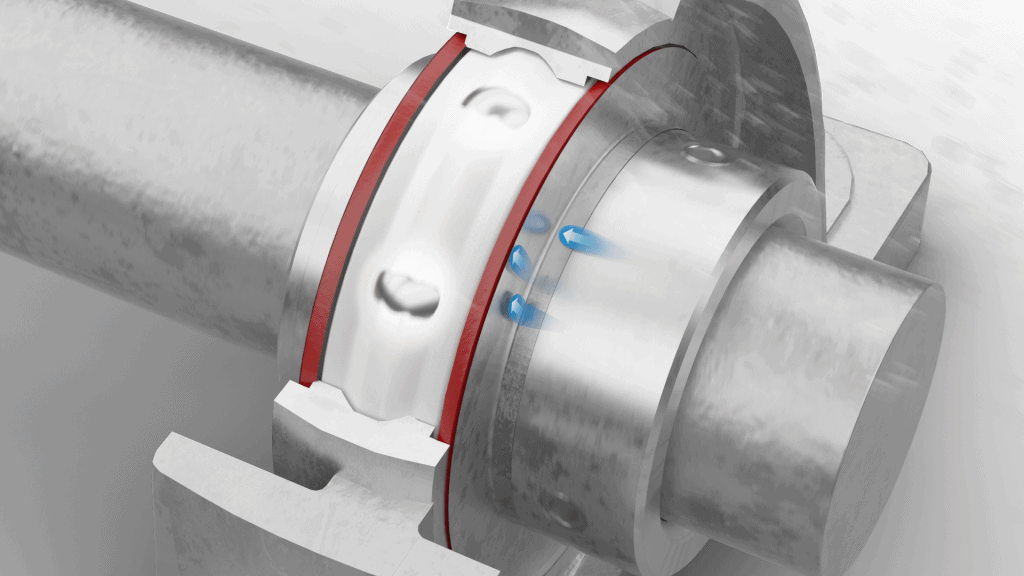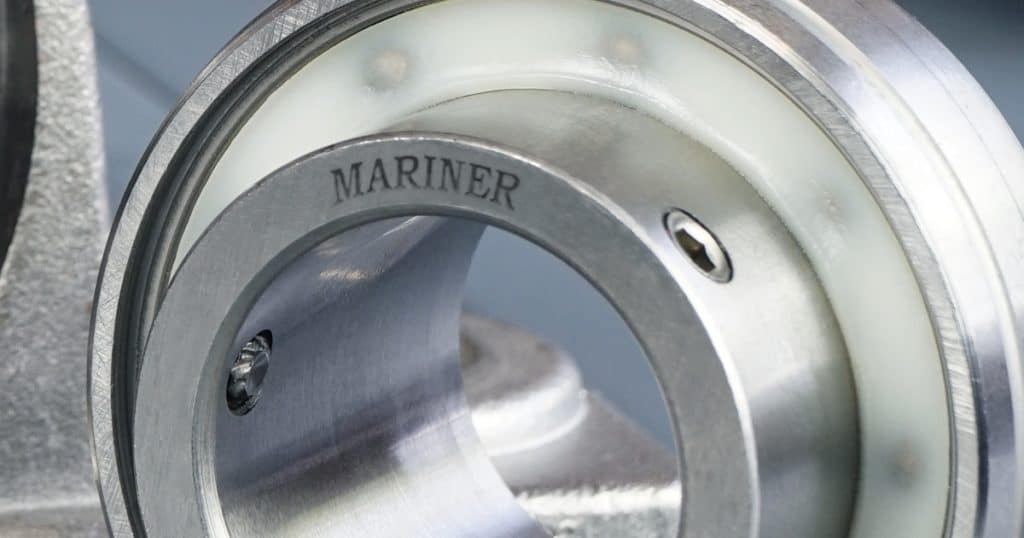Stainless Steel or Thermoplastic Bearings?

Corrosion-resistant and food-grade bearings are critically important in multiple industries. Typically their inclusion is non-negotiable due to their inherent benefits. Corrosion-resistant and food-grade bearing housing materials have significant overlap, both in terms of application and function. Thermoplastic and stainless steel bearings are the best options. But is one better than another? And are they interchangeable?
Determining the best housing material for your application is about more than food safety and corrosion resistance. There are many details to consider here. Let’s go over the specifics.
Stainless Steel and Thermoplastic Commonalities
When corrosion resistance is necessary for an application, virtually all components need this capability. This goes for food processing as well as many other industries, such as marine, pharmaceutical, and chemical manufacturing, among others. A standard cast iron housing and steel bearing wouldn’t last long in the heavily iron-oxidizing processes (rusting) found throughout much of these industries.
Both stainless steel and thermoplastic housings come equipped with a stainless steel bearing insert. Inclusion of stainless steel inserts are not just because they are highly corrosion resistant, but they also have excellent temperature resistance, while remaining relatively cost-effective.

Stainless steel and thermoplastic housings are both engineered to be corrosion resistant. They can stand up to the frequent washing required in many applications. Not only are they resistant to rusting from water, but they also resist pitting damage from chemicals, solvents, and solutions used in more intensive cleanings.
Beyond rebuffing the effects of chemicals and water, these materials are both easy to clean. Stainless steel and thermoplastics alike have smoother surfaces that are less porous than cast iron housings. These smooth, paint-free surfaces mean your washdowns will be more effective while leaving behind less residue.
Another benefit of these bearings is that they come with a food-grade grease. Some manufacturers may allow you to select the specific grease you prefer, but typically food-grade will be the standard option. While these lubricants will ideally not come into contact with your food products, any incidental contact is safe.
What are the Benefits of Thermoplastic Housings?
Thermoplastic housings are found in a more diverse set of applications, not strictly limiting themselves to corrosion resistance or food-grade applications. Manufacturers offer a wider variety of final products, too, with inserts ranging from stainless steel, coated steels, or even plastic. Versatility in the final product is a characteristic thermoplastic has to a high degree.
Thermoplastics are typically manufactured with polybutylene terephthalate, which is a highly adaptable polymer. The housings can come reinforced with glass fiber or steel wire, which lends strength. Their construction makes them lighter than their metal counterparts. In some applications saving weight is a factor – and thermoplastics excel at that.
Many users find the lower cost of thermoplastics when compared with stainless steel, to be a compelling benefit. They are easier and less expensive to produce, which helps lower prices. Depending on your application requirements, a thermoplastic option may work great and save you money.
Beyond being lighter and cost-effective, thermoplastics have the additional benefit of reduced conductivity. Metals are highly conductive of both heat and electricity. Stainless steel is no exception, but plastics don’t have that problem. Thermoplastic housings benefit from lowered conductivity for both electric currents and temperature, though applications necessitating these advantages typically don’t also require corrosion resistance or food-grade safety.
Finally, manufacturers can create thermoplastics that include an active antimicrobial agent. Microbes and bacteria tend to prefer dark, wet places to hide and grow. That makes a bearing – especially one without a solid base – the perfect place for bacteria to grow. Antimicrobial technology actively resists any colonization by microbes of all kinds.
What are the Benefits of Stainless Steel Housings?
Stainless steel housings are an excellent option for food industry applications. These bearings are just as resistant to water and chemical corrosion as their thermoplastic counterparts but have some additional benefits. Primarily, they are more physically durable than thermoplastics, which may be necessary depending on your application.
Stainless steel has a much higher tensile strength than plastic. The housings on these bearings will always be more resistant to bending and cracking under pressure or sudden shocks. It’s simply the more physically robust material.
Some materials permanently bend or distort from the repeated stress of shock loads in more punishing applications. Stainless steel isn’t one of them. These housings do not experience cold flow (otherwise known as creep, which is the process of slow deformation through repeated stresses) during their use.
Stainless steel also doesn’t absorb moisture, which can be very important when exposed to frequent washdowns. That means they are safe from swelling and the increased possibility of failure that comes with it. Some advanced thermoplastics can deny moisture absorption, but not all. Without that failsafe, their material weakens over time.
Many stainless steel housings come with a solid base, but this is not universal. A solid base eliminates the possibility that contaminants and microbes build up in crevices beneath the mounted bearing. Eliminating this possibility keeps your production line cleaner. Some thermoplastic housings come with solid bases, but not all. If the manufacturer you are purchasing from is trying to keep the bearing light, it will accomplish this through cut-outs or recesses in the base.
Be Careful When Choosing a Food-Grade Mounted Bearing
When selecting a mounted bearing for your application, you’ll want to pay attention to detail. Thermoplastic housings, in particular, include a lot of variety in the final product. Manufacturers may use different formulations for their plastics – some will be microbe-resistant, some contain structural reinforcement, some will avoid swelling, and some will have solid bases. All of these options will be manufacturer dependent.
A key benefit of stainless steel is avoiding that confusion. Unlike thermoplastics, there is more consistency in stainless steel housing construction and quality. They are nearly universal as far as materials used, which is typically 304 stainless steel. There are some exceptions, of course, for situations requiring increased corrosion resistance or in combating extreme heat.
When you buying stainless steel bearings, you know what you’re getting.
Depending on your application, a thermoplastic housing may be suitable. However, purchasing stainless steel is an easier choice. Stainless steel bearings are more consistent, more durable, and won’t give you any surprises. You can order with confidence and rest easy with the constant durability of stainless steel.
Interested in lasting value you can trust? Mariner stainless steel mounted bearings help you weather the storm. Learn more.
Sort by category: Case Studies & Solutions
Sort by topic: Bearing Materials, Mariner, Stainless Steel Bearings




